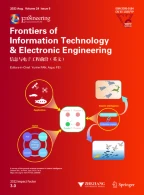Abstract
Transients in load and consequently in stack current have a significant impact on the performance and durability of fuel cells. The delays in auxiliary equipments in fuel cell systems (such as pumps and heaters) and back pressures degrade system performance and lead to problems in controlling tuning parameters including temperature, pressure, and flow rate. To overcome this problem, fast and delay-free systems are necessary for predicting control signals. In this paper, we propose a neural network model to control the stack terminal voltage as a proper constant and improve system performance. This is done through an input air pressure control signal. The proposed artificial neural network was constructed based on a back propagation network. A fuel cell nonlinear model, with and without feed forward control, was investigated and compared under random current variations. Simulation results showed that applying neural network feed forward control can successfully improve system performance in tracking output voltage. Also, less energy consumption and simpler control systems are the other advantages of the proposed control algorithm.
Similar content being viewed by others
Explore related subjects
Discover the latest articles, news and stories from top researchers in related subjects.References
Arriagada, J., Olausson, P., Selimovic, A., 2002. Artificial neural network simulator for SOFC performance prediction. J. Power Sources, 112(1):54–60. [doi:10.1016/S0378-7753(02)00314-2]
El-Sharkh, M.Y., Rahman, A., Alam, M.S., 2004. Neural networks-based control of active and reactive power of a stand-alone PEM fuel cell power plant. J. Power Sources, 135(1–2):88–94. [doi:10.1016/j.jpowsour.2004.03.071]
Entchev, E., Yang, L., 2007. Application of adaptive neuro-fuzzy inference system techniques and artificial neural networks to predict solid oxide fuel cell performance in residential micro generation installation. J. Power Sources, 170(1):122–129. [doi:10.1016/j.jpowsour.2007.04.015]
Huang, S., Kiong, K., Tang, K.Z., 2008. Neural Network Control: Theory and Application. National University of Singapore, Singapore.
Iqbal, M.T., 2003. Simulation of a small wind fuel cell hybrid energy system. Renew. Energy, 28(2):223–237. [doi:10.1016/S0960-1481(02)00016-2]
Rakhtala, S.M., Shakeri, M., Rouhi, J., 2008. Determination of Optimum Operating Point of a DMFC by Computer Simulation Software. Int. Conf. on Power System.
Saengrung, A., Abtahi, A., Zilouchian, A., 2007. Neural network model for a commercial PEM fuel cell system. J. Power Sources, 172(2):749–759. [doi:10.1016/j.jpowsour. 2007.05.039]
Thounthong, P., Rael, S., Davat, B., Sadli, I., 2006. A Control Strategy of Fuel Cell/Battery Hybrid Power Source for Electric Vehicle Applications. 37th IEEE Power Electronics Specialists Conf., p.1–7. [doi:10.1109/PESC.2006.1712067]
Wang, C., Nehrir, M.H., Shaw, S.R., 2005. Dynamic models and model validation for PEM fuel cells using electrical circuits. IEEE Trans. Energy Conv., 20(2):442–451. [doi:10.1109/TEC.2004.842357]
Wu, X.J., Zhu, X.J., Cao, G.Y., Tu, H.Y., 2008. Predictive control of SOFC based on a GA-RBF neural network model. J. Power Sources, 179(1):232–239. [doi:10.1016/j.jpowsour.2007.12.036]
Author information
Authors and Affiliations
Corresponding author
Rights and permissions
About this article
Cite this article
Rakhtala, S.M., Ghaderi, R. & Ranjbar Noei, A. Proton exchange membrane fuel cell voltage-tracking using artificial neural networks. J. Zhejiang Univ. - Sci. C 12, 338–344 (2011). https://doi.org/10.1631/jzus.C0910683
Received:
Accepted:
Published:
Issue Date:
DOI: https://doi.org/10.1631/jzus.C0910683
